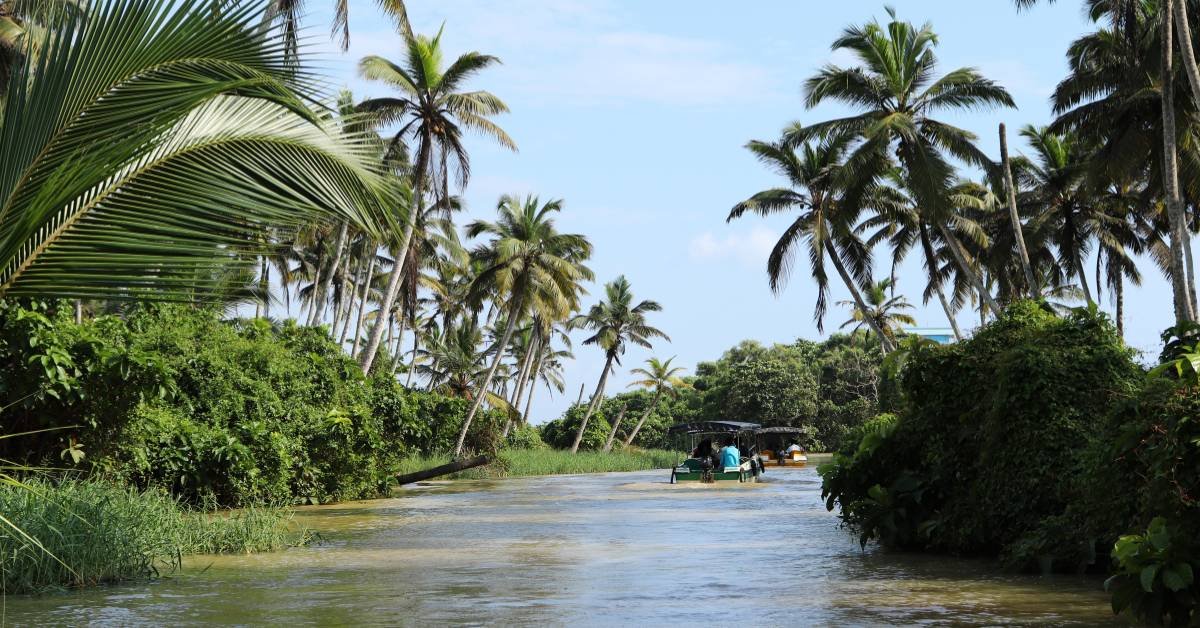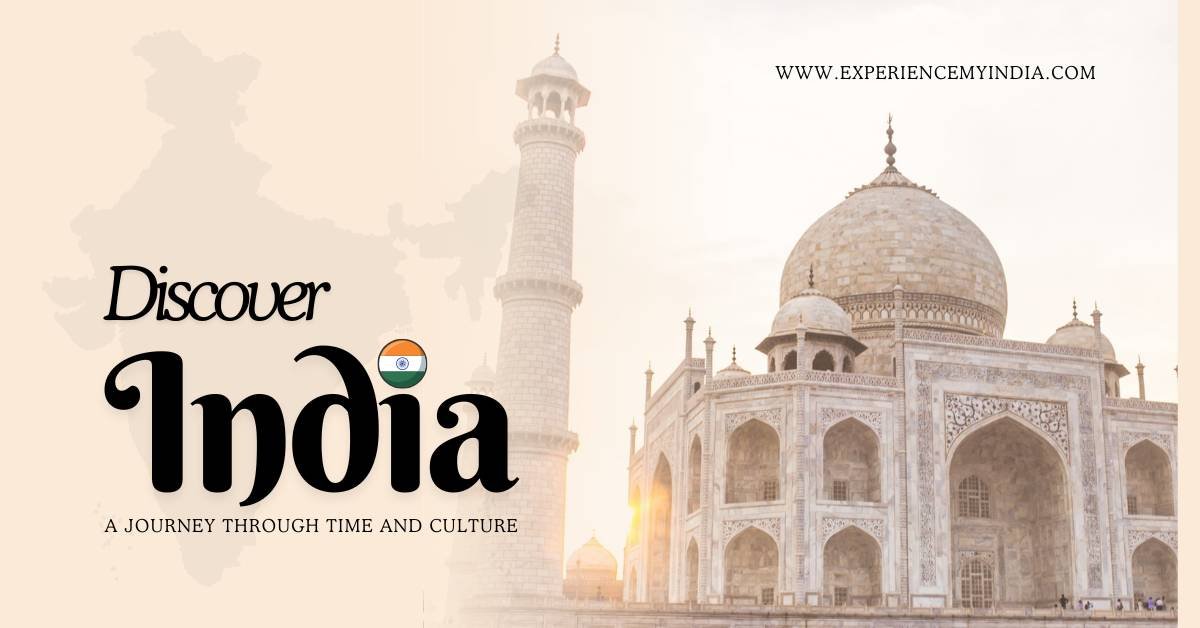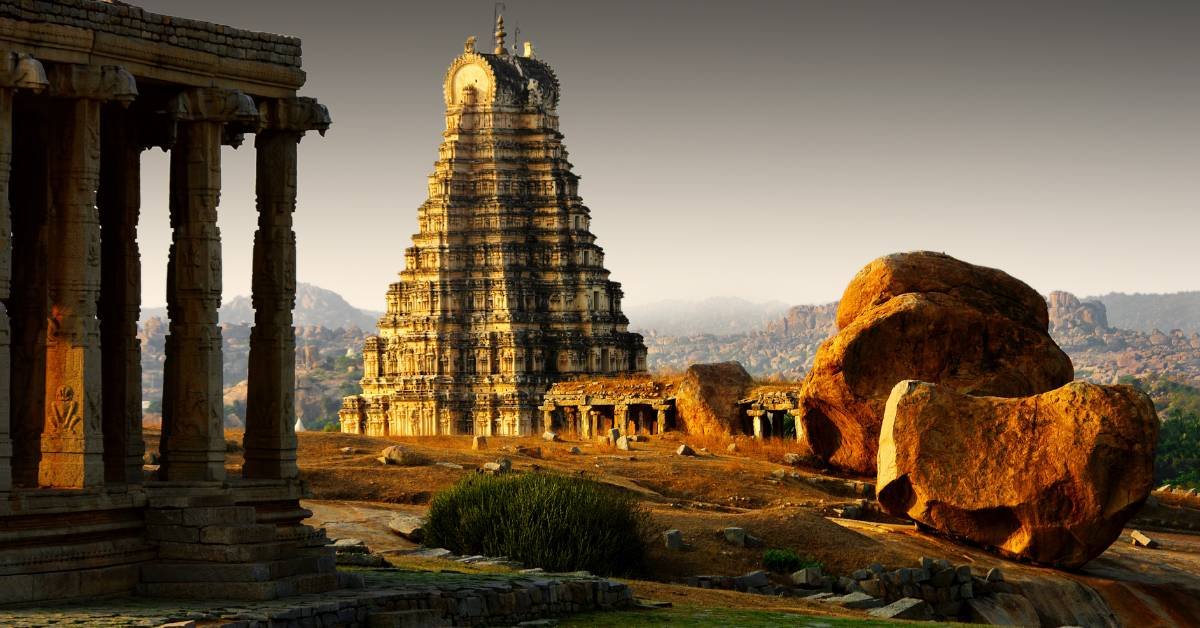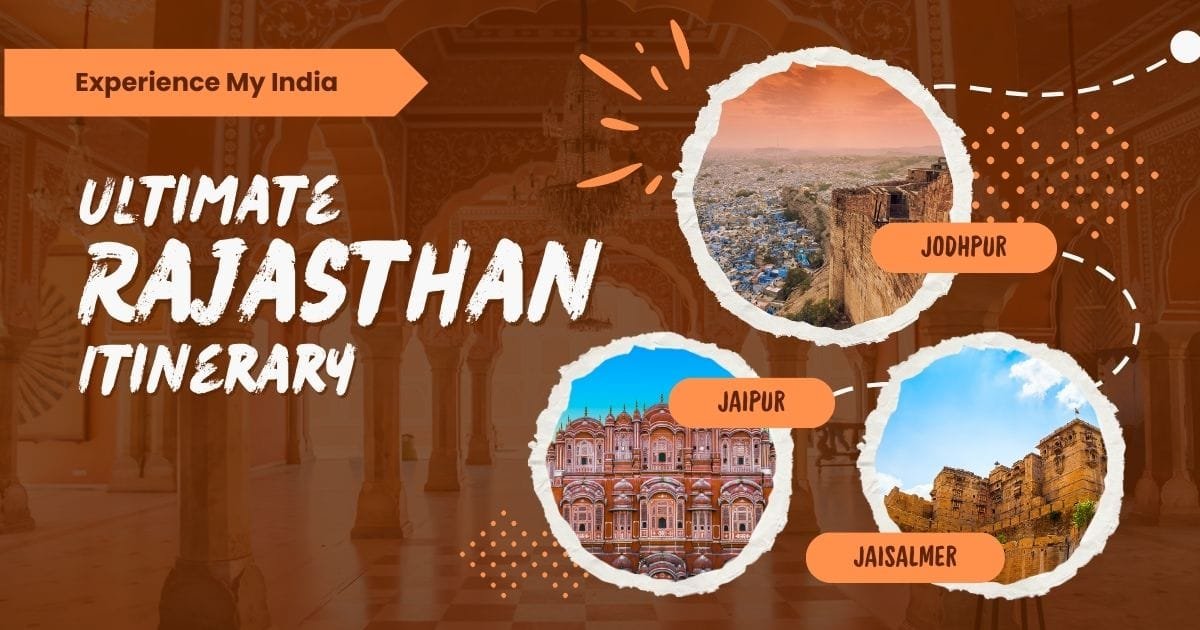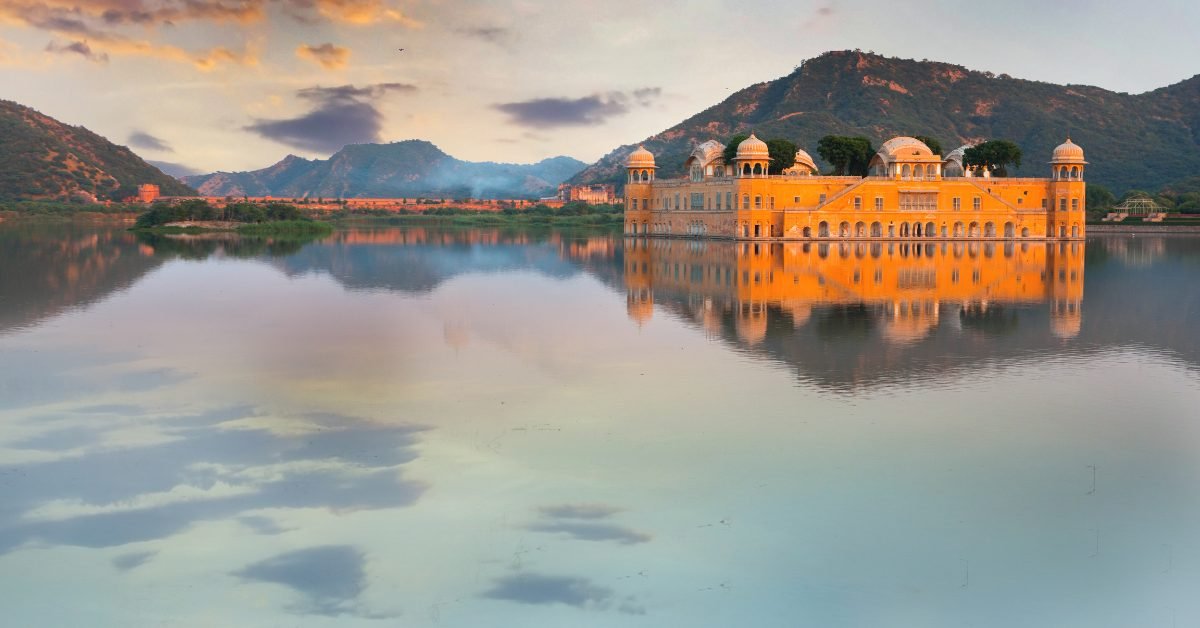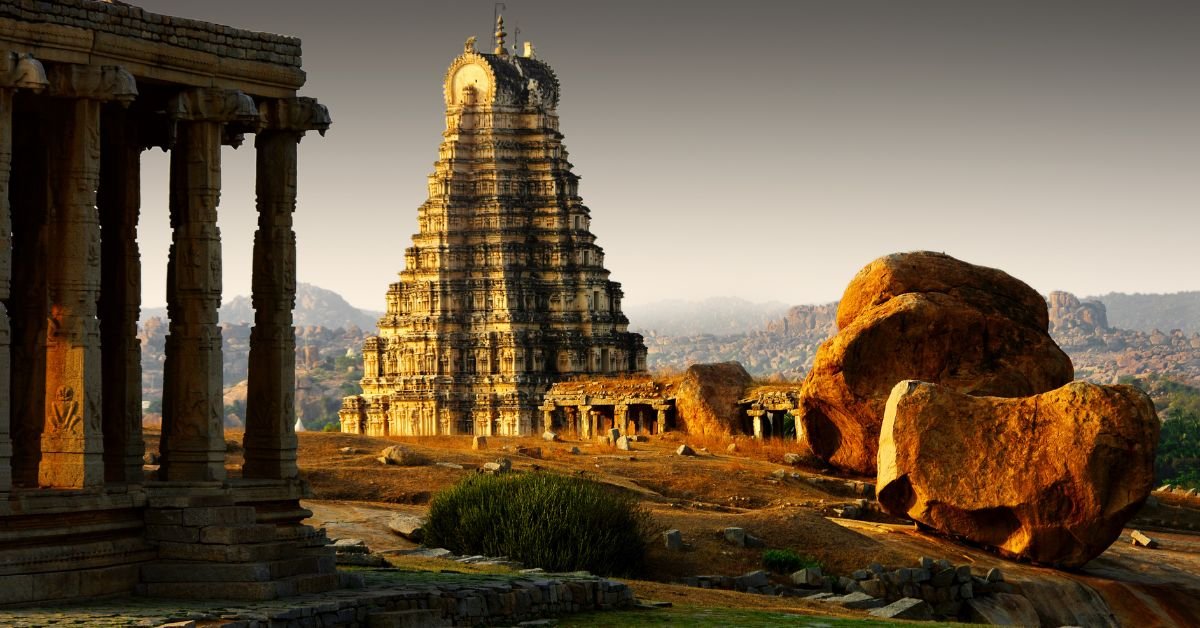Welcome to the land of kings and queens, where history comes alive through magnificent architectural marvels. In the heart of the regal city of Jaipur, lies the iconic Rajasthan Hawa Mahal, an epitome of Rajasthan's grandeur and architectural brilliance. Standing tall since 1799, this enchanting palace will transport you to a bygone era. With its striking façade adorned with intricate latticework and 953 small windows, the Hawa Mahal, also known as the Palace of Winds, is a sight to behold. Designed by Lal Chand Usta, this five-story structure was built for the royal women to observe street processions and events while maintaining their privacy.
Its unique honeycomb-like structure makes it an architectural masterpiece, providing a cool breeze throughout the palace even during scorching summers. As you step inside, prepare to be awe-inspired by the beautifully carved pillars, ornate chambers, and intricate artwork that adorn the walls. Every corner of the Hawa Mahal tells a story of Rajasthan's rich cultural heritage and opulent past. Join us on a journey through time as we unravel the grandeur of Rajasthan's Hawa Mahal and explore the harmonious blend of art, history, and architectural brilliance that awaits within its walls. Are you ready to be captivated by the magnificence of this iconic palace? Let's begin our adventure.
Historical Significance of Hawa Mahal
- Built in 1799: Commissioned by Maharaja Sawai Pratap Singh, Hawa Mahal was designed by Lal Chand Ustad as an extension to Jaipur’s City Palace.
- Influence of Lord Krishna: The Maharaja was a devotee of Lord Krishna and wanted the palace to resemble the god’s crown.
- Royal Women’s Retreat: Rajasthan Hawa Mahal was constructed for the royal women of the palace, providing them with a space to observe daily activities and city life while maintaining their privacy.
- Cultural Representation: It symbolizes the Rajput culture, where women observe strict 'purdah' (veil) but still has the freedom to enjoy the happenings of the outside world without being see.
- Key to Jaipur's Heritage: Rajasthan Hawa Mahal has played a significant role in preserving the city’s royal history, reflecting the vision and architectural mastery of Jaipur’s rulers.
Architectural Features of Hawa Mahal
- Five-Story Facade: Rajasthan Hawa Mahal stands tall at five stories, with a honeycomb structure that gives it a unique aesthetic appeal.
- 953 Windows (Jharokhas): These small, intricately carved windows are the hallmark of the palace, allowing natural ventilation and light to flood the interiors.
- Lattice Work: The finely detailed latticework on the windows provides ventilation while keeping the interiors cool during the scorching Rajasthan summers.
- No Foundation: Interestingly, Rajasthan Hawa Mahal stands without a foundation, yet remains structurally sound after over 200 years.
- Rajput and Mughal Fusion: The architecture is a blend of Rajput and Mughal styles, showcasing domes, arches, and delicate stone carvings that speak to both grandeur and functionality.
The Purpose of Hawa Mahal’s Design
- Cooling System: The numerous windows and ventilation channels allow cool breezes to circulate through the palace, a natural cooling mechanism in the arid climate of Rajasthan.
- Observing Processions: The royal women could watch festivals, processions, and the everyday bustle of Jaipur from the privacy of the lattice windows.
- Prominent Location: Situated at the heart of Jaipur’s main market, Rajasthan Hawa Mahal was strategically place for the royal family to observe life in the city without leaving the palace.
- Cultural Significance: The structure represents both the devotion of the Maharaja to his people and his respect for the customs of the royal women.
- Aesthetic and Practical: It’s an architectural wonder designed to be both visually striking and functionally efficient, representing the foresight of Jaipur's rulers.
Exploring the Different Levels of Hawa Mahal
- First and Second Floors: These are the largest floors, featuring broad courtyards and intricately decorated rooms used for gatherings and royal ceremonies.
- Third Floor: As you ascend, the floors narrow. The third level offers a more intimate view of the city, and its smaller rooms were often use by royal women for daily activities.
- Fourth Floor: This floor was primarily use for relaxation and leisure, with open spaces and quieter areas for private moments.
- Fifth Floor: The topmost floor offers panoramic views of Jaipur. It’s the smallest level, resembling a crowning element and providing a sense of connection between the palace and the heavens.
- Different Perspectives: Each level offers a unique view of Jaipur, allowing visitors to experience the city from various vantage points.
Famous Rooms and Unique Features within Hawa Mahal
- Vichitra Mandir: A significant room where the Maharaja performed his religious activities, known for its spiritual significance.
- Prakash Mandir: Named for the abundance of natural light, this room opens onto terraces, offering breathtaking views of the city.
- Hawa Mandir: Known for the cool breeze that flows constantly through the palace, this room is a haven during Rajasthan's sweltering summers.
- Decorative Walls: The inner chambers feature beautiful floral motifs, delicate stonework, and carvings that display the artistry of the time.
- No Stairs: Instead of traditional staircases, Rajasthan Hawa Mahal has sloping ramps leading to the upper floors, designed for easy movement and to maintain the integrity of the structure.
Hawa Mahal as a Tourist Attraction
- Iconic Symbol of Jaipur: Rajasthan Hawa Mahal is one of the most recognized monuments in India, symbolizing the rich heritage of Rajasthan.
- Photographic Gem: The palace’s intricate design, especially its façade, is a photographer’s paradise, offering stunning angles, especially at sunrise.
- Part of UNESCO Heritage: As part of the greater Jaipur City, Rajasthan Hawa Mahal is include in Jaipur's UNESCO World Heritage status, attracting tourists globally.
- Cultural Hub: Visitors not only explore the palace but also enjoy the vibrant surroundings of Jaipur’s markets and other historic landmarks.
- Night Illumination: At night, Rajasthan Hawa Mahal is beautifully, showcasing its architectural elegance and making it a must-visit during evening hours.
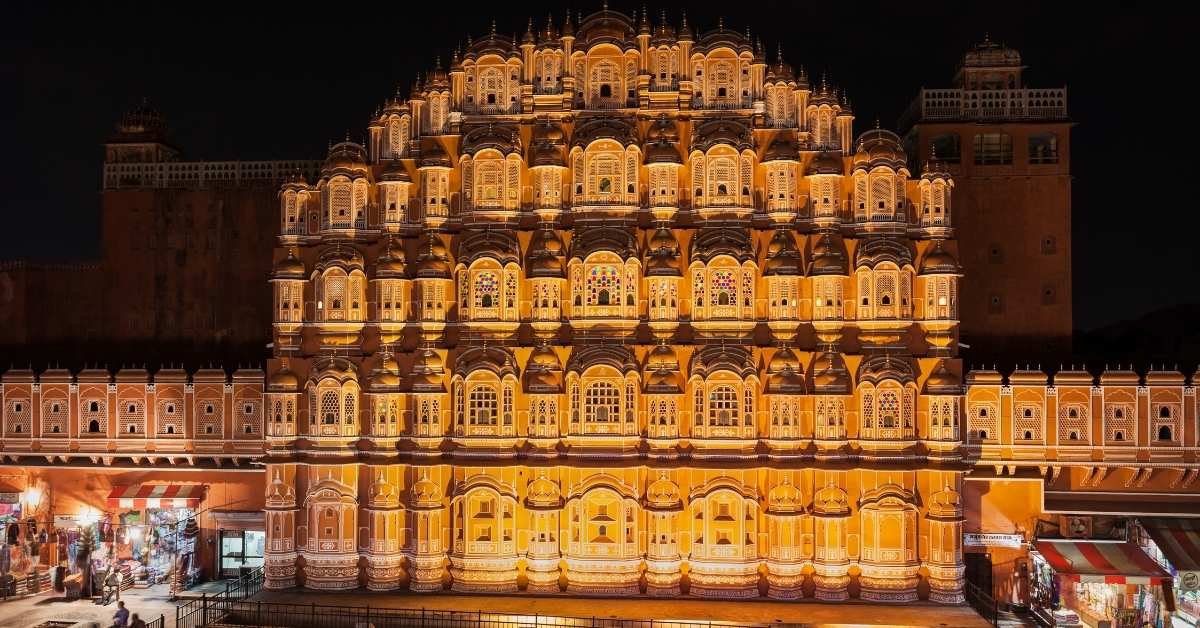
Tips for Visiting Hawa Mahal
- Best Time to Visit: Early morning is the best time to visit Rajasthan Hawa Mahal when the sunlight casts a golden glow on the pink sandstone structure.
- Footwear: Comfortable shoes are a must, as you’ll be walking through narrow passages and ascending ramps.
- Local Guide: A local guide can provide fascinating insights into the history, architecture, and legends associated with Rajasthan Hawa Mahal.
- Avoid Midday Heat: Visiting during the hotter part of the day may be uncomfortable due to the climate, so plan accordingly.
- Camera Ready: Be prepare for stunning photography opportunities—especially the view from the top floors, offering panoramic scenes of Jaipur.
Interesting Facts and Legends Associated with Hawa Mahal
- Crown Shape Design: The façade has said to resemble the crown of Lord Krishna, as per the wishes of Maharaja Sawai Pratap Singh.
- No Stairs: The palace has designed with ramps instead of stairs, reflecting the innovative architectural design of the time.
- Unseen from the Public Eye: The intricate lattice windows ensured that royal women could observe the streets without being see by the public, maintaining their privacy.
- Legend of Strength: Despite having no foundation, Rajasthan Hawa Mahal has survived over two centuries of natural wear and tear, proving its resilience.
- Tilted Structure: The palace has slightly tilted forward, yet remains structurally sound—an architectural marvel that continues to intrigue engineers and architects.
Conclusion: Reflecting on the Timeless Beauty of Hawa Mahal
Rajasthan Hawa Mahal remains an enduring symbol of Jaipur’s royal heritage, embodying the artistry and cultural values of its time.Its design harmonizes beauty with practicality, offering an architectural masterpiece that serves both visual and functional purposes. Again, visiting Rajasthan Hawa Mahal allows visitors to step into a bygone era, where royalty once lived, prayed, and celebrated life within its walls. The palace continues to inspire modern architecture with its innovative design, showcasing the genius of Rajput architecture.
Rajasthan Hawa Mahal’s elegance, history, and architectural brilliance make it a must-visit destination for anyone exploring the cultural richness of Rajasthan.
Book your tour packages with us for a seamless experience and make memories for lifetime.
Click here to book your tour Package or contact us on phone number +917300620809




